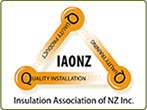 The key to insulating your home is selecting the most appropriate insulation Auckland materials. With numerous options out there in the marketplace, this can be a difficult choice.
The key to insulating your home is selecting the most appropriate insulation Auckland materials. With numerous options out there in the marketplace, this can be a difficult choice.
However, if you’re looking for an insulation product that’s both good for your home and good for your environment, consider cellulose, a very common form of insulation for homes and buildings throughout the world, including Europe, North America and Australia.
Cellulose Insulation Explained
One of the oldest building insulation materials in the world, cellulose insulation Auckland was originally made from straw, hemp and sawdust. Today, it is manufactured from recycled newspaper which makes up about 80% of its content. Natural minerals which give fire resistance and vermin-repelling properties contribute to the remaining 20%.
This makes cellulose one of the most environmentally friendly of all insulation products world-wide. In fact, insulating a typical 150m2 home with cellulose insulation productively recycles as much newsprint as an individual will use in 40 years.
A non-toxic product, cellulose does not contain any harmful or carcinogenic fibres and has no perceptible odour. It is resistant to fungal growth and doesn’t irritate the skin if touched. Cellulose is also treated with a natural fire-retardant which doesn’t deteriorate, evaporate or leach out over time.
This retardant slows down the spread of fire rather than enhancing it. As well, cellulose is able to repel insects and vermin. Acoustically efficient, cellulose helps to deaden the sound through walls and between floor levels. It is three times denser than fibreglass. Cellulose is also durable with a serviceable life of at least 50 years.
Cellulose Insulation Installation
Installed by licensed contractors, cellulose insulation Auckland is in a loose form that is blown into wall and ceiling cavities using a specialised blower unit that gives total coverage, even in those hard-to-reach areas where blanket products can’t guarantee the same coverage. As the product is installed, a water-based adhesive is added to stabilize the product and reduce slumping.
A popular option for the ceilings of existing homes, it is also an efficient option for ceiling and wall insulation in renovations and new homes. Cellulose may be added to existing ceiling insulation that has slumped in order to increase its efficiency. The professional installer will recommend the best cellulose insulation thickness for your home given its structure and location.
Cellulose insulates buildings in all seasons. It keeps the heat in the home during the winter and out during the summer to improve comfort levels all year round. Due to the fact that cellulose insulation Auckland can be blown around air gaps, it is efficient at preventing air leakage which is impossible with many other insulation products.
Another benefit of cellulose insulation is that it is cheaper than some other insulation products. It can also save homeowners between 20 and 50% on their gas or electricity bills, paying for itself over the years.
Before deciding on which cellulose product to choose, check if it has BEAL or BRANZ accreditation. If so, it means that rigorous testing has deemed it to be compliant for use as a thermal material in walls, roofs and ceilings. So, not only is cellulose insulation Auckland cost-efficient, environmentally-friendly and safe, it is also an approved product.


